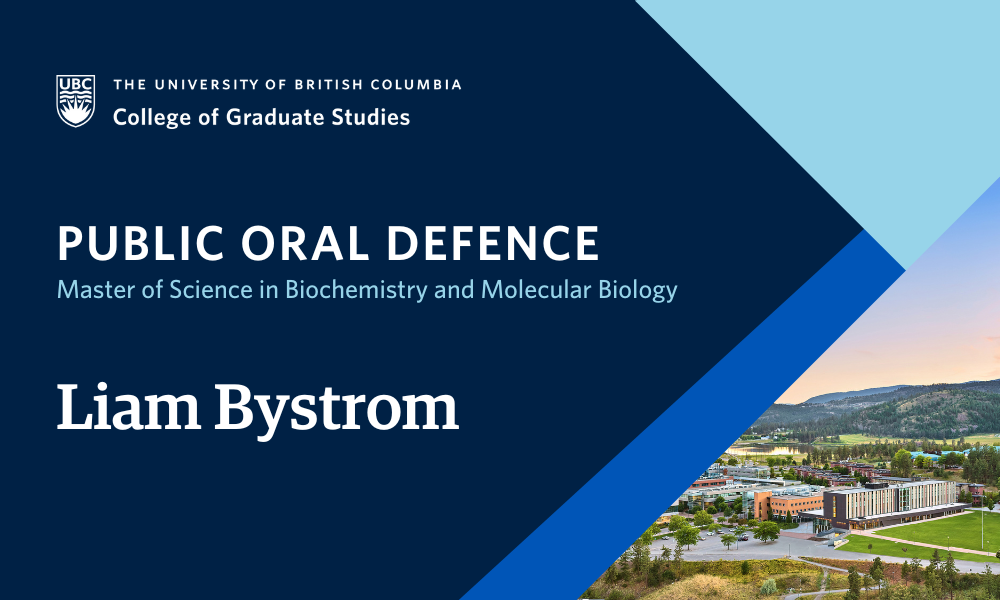
- This event has passed.
Thesis Defence: Coupling Butyryl-Coenzyme a Oxidation to Oxygen Reduction in Fusobacterium Nucleatum
October 29 at 11:00 am - 3:00 pm

Liam Bystrom, supervised by Dr. Kirsten Wolthers, will defend their thesis titled “Coupling Butyryl-Coenzyme a Oxidation to Oxygen Reduction in Fusobacterium Nucleatum” in partial fulfillment of the requirements for the degree of Master of Science in Biochemistry and Molecular Biology.
An abstract for Liam Bystrom’s thesis is included below.
Defences are open to all members of the campus community as well as the general public. Registration is not required for in person defences.
Abstract
Fusobacterium nucleatum is a Gram-negative obligate anaerobe and a normal constituent of the human oral cavity. Additionally, F. nucleatum can disseminate through the bloodstream of its host and colonize distal sites including tumors of the colon where it can exacerbate disease. In the host, F. nucleatum encounters oxygen as well as derivative reactive oxygen and nitrogen species, but there is limited information on oxidative and nitrosative defense mechanisms present in F. nucleatum.
Examination of F. nucleatum subsp. polymorphum’s genome revealed the presence of a flavodiiron protein (FDP) which is known to reduce O2 and/or NO to H2O or N2O, respectively. Colocalized with the FDP gene is a gene encoding a multicomponent enzyme called butyryl-CoA reductase (BCR). BCR contains three distinct domains: butyryl-CoA dehydrogenase (BCD), the C-terminal domain of the α-subunit of an electron transfer flavoprotein (ETFα), and rubredoxin (Rd). This thesis details work which shows that BCR functions to oxidize butyryl-CoA and transfer the reducing equivalents to the FDP for reduction of O2 to H2O. Electron transfer is dependent on the formation of a neutral semiquinone of the FAD bound to BCD and an anionic semiquinone of the FAD bound to ETFα. This enzyme pair gives F. nucleatum the ability to use a common metabolite (butyryl-CoA) with a high reduction potential to reduce O2 and prevent oxidative stress.
By using butyryl-CoA as reductant, F. nucleatum can derive additional energy from its amino acid-based metabolism while simultaneously removing toxic O2. The novel BCR-FDP is one of the only enzymes characterized from F. nucleatum to function in oxidative stress defense, making it a potentially critical enzyme for F. nucleatum’s survival and subsequent infection. Bioinformatic analysis revealed that BCR-FDP is prevalent in many species of anaerobic gut bacteria where it may function in maintaining anaerobiosis and therefore a healthy gut microbiome.